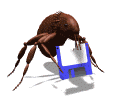Virus and Malware Removal
So what are Malware, Viruses, and  Spyware, and what differentiates them ?
Spyware, and what differentiates them ?
Virus: A computer virus spreads itself by smuggling its code into another program. The name is an analogy to its biological counterpart. Not only does a computer virus spread many times and make the host software unusable, but also exhibits malicious behavior.
Trojan horse/Trojan: A Trojan horse is a type of malware that is disguised as a useful program. The goal is for the user to execute the Trojan, allowing it to take full control of your PC and use it for its own agenda. This typically results in the installation of additional malware (such as backdoors or keyloggers) to your system.
Worm: Worms are malicious software that aim at spreading as fast as possible once your PC has been infected. Unlike viruses, worms don’t require a host program, but instead spread themselves via storage devices such as USB sticks, communication media such as e-mail or vulnerabilities in your OS. Their propagation causes a reduction in the performance of PCs and networks. They may also implement direct malicious behavior.
Keyloggers: Keyloggers secretly record everything you type on your keyboard, which allows attackers to get their hands on your passwords or other important data such as online banking details.
Backdoor/Bot: A backdoor is a portion of code that is usually implemented into a program by the software’s author, to enable access to your PC or an otherwise protected software function. Backdoors are often installed by Trojans once they have been executed, so that the attacker can gain direct access to your PC. The infected PC, also known as a “bot”, becomes part of a botnet.
Exploit: Exploits are used to systematically exploit vulnerabilities in a computer program. Using them, an attacker can gain either partial or full control of your PC.
Spyware: Spyware is software that spies on you by collecting various types of user data from your PC without your knowledge.
Adware: Adware is derived from the word “advertisement”. In addition to the actual function of the program, the user will be presented with advertisements. Adware itself is not dangerous, but the display of countless adverts is generally considered undesirable and is thus detected by good anti-malware solutions.
Rootkit: A rootkit usually consists of several components that grant the author unauthorized access to the target system. In addition, these programs hide their processes and actions using other software. They can be installed, for instance, through an exploit or a Trojan.
Rogues/Scareware: Also known as “Rogue Anti-Spyware” or “Rogue Anti-Virus”, rogues pretend to be security software. They frequently use fake warnings to trick users into purchasing the software, which the attackers then profit from illegally.
Ransomware: Ransomware” is exactly what it sounds like. Ransomware encrypts the user’s personal data or may even lock the entire PC. You are asked to pay a “ransom” via an anonymous service in order to unlock your computer.

